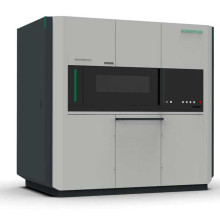Measuring torque with sensors inside the transmission
- Details
- Hits: 2249
Schaeffler presents to Automatica sensors for Cobots, which in precisionStrain wave gear are integrated. With this concept measure torque are shorter cycle times in the Robotic possible. Methods like these enable significant progress for the widespread use of collaborative robots in industrial automation.

Contents
- Torque measurement external and internal
- Stiffness and influence on the positioning time
- External versus internal torque sensor
- Summary of the new torque measurement
Torque measurement external and internal
Should Cobots to work sensitively and force-controlled and to teach smoothly, you need one sensorsto get measurement data from the external forces. For the measurements of external forces and moments, in Cobots usually Torque sensormodules deployed. These are sensors that were developed as independent components for collaborative robotics. Not only do they require additional installation space, but they also have to be integrated into the design of the cobot.
External torque sensors
With these sensors, the forces and moments with the help of the Strain Gauge Technology (DMS) determined. With strain gauge sensors, the sensors are usually glued to an elastic structure. The design of such sensors is a compromise between high resolution and low deformation. In applications in which the end effector has to maintain a trajectory or position under load, the position deviation caused by the sensor is disadvantageous. Concrete designs are 6-axis force-torque sensors on the end effector or sensor modules flanged to articulated axes.
New concept: internal torque sensors
The ingenious concept of the Schaeffler engineers consists in using an existing component to measure the torque instead of an additional elastic element Powertrain access. As a result, no further elasticity is brought into the cobot structure. Their rigidity is completely retained with sensors. What are the advantages of this internal concept?
Stiffness and influence on the positioning time
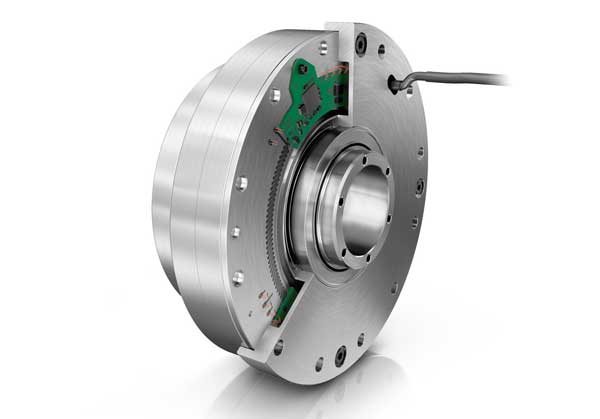 Due to their slim design and the associated higher elasticity Compared to industrial robots, they have one major disadvantage: At higher accelerations, they vibrate noticeably due to their slim structure - especially when braking to the maximum during positioning. Then, due to the longer transient period, what was gained in cycle time through high speed and acceleration disappears into thin air again.
Due to their slim design and the associated higher elasticity Compared to industrial robots, they have one major disadvantage: At higher accelerations, they vibrate noticeably due to their slim structure - especially when braking to the maximum during positioning. Then, due to the longer transient period, what was gained in cycle time through high speed and acceleration disappears into thin air again.
These factors strongly influence the natural frequency of cobots:
- Tilting rigidity of spherical bearings or Transmission-Main camp
- Torsional stiffness of the gears and torsional stiffness of the torque sensors
External versus internal torque sensor
While with external torque sensors the Torsional stiffness of a joint falls to 25% to 60% due to the additional elasticity introduced, this is fully retained in the concept developed by Schaeffler for measuring the torque.
Basis for comparison Precision Wave Gears
A comparison of the two concepts in a worst-case scenario is intended to illustrate the influence of the torsional rigidity of a torque sensor on the dynamic behavior of cobots. The manufacturer's own serves as a basis for comparison Precision shaft gear RT1 on the one hand with integrated sensors and on the other hand with an external sensor module. The Motor each accelerates a mass moment of inertia of 7,6 kgm2 out of zero. Then he brakes again to a standstill.
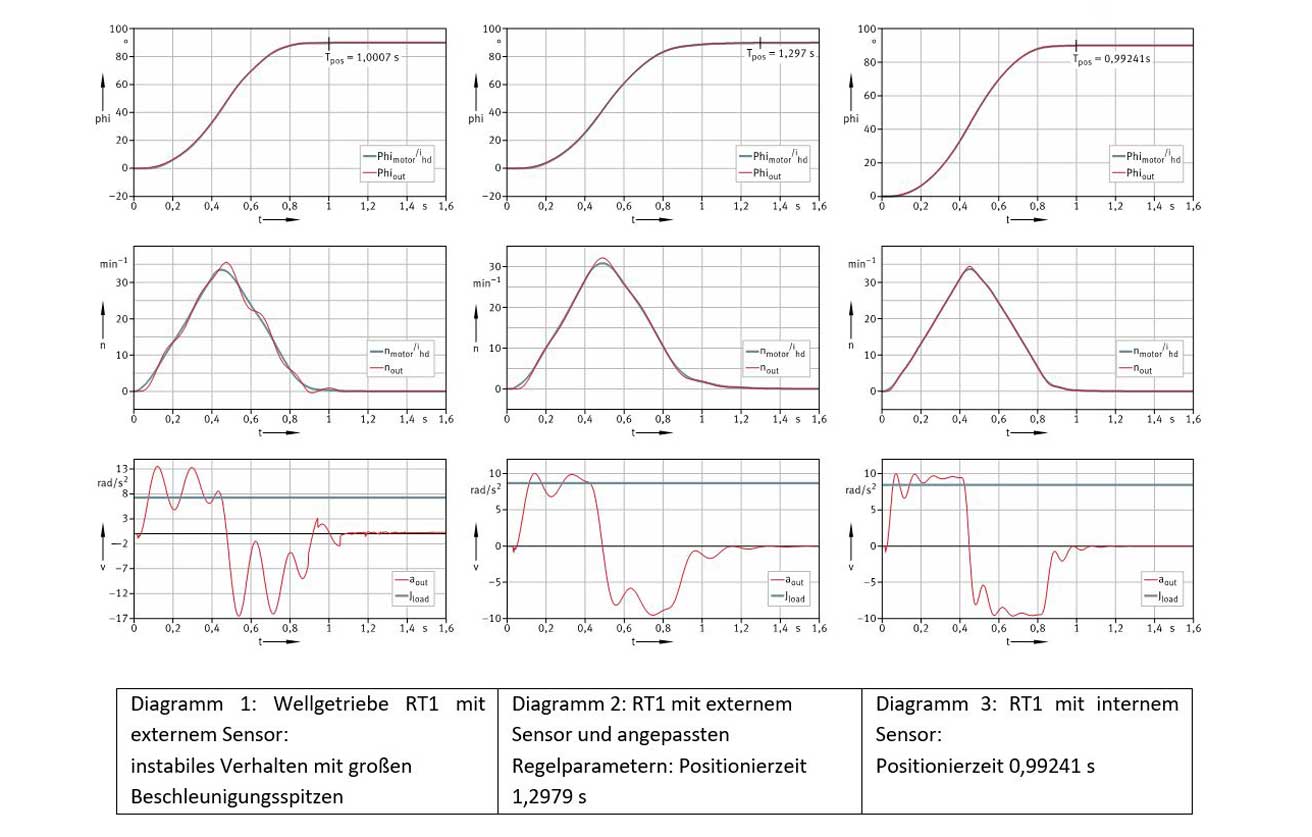
Adjustment of the control parameters
The drive with an external torque sensor (diagram 1) clearly shows unstable behavior with very high acceleration peaks. To improve the dynamic behavior, the test engineers adjusted the control parameters in a second simulation. This enabled them to reduce the acceleration peaks. However, this was at the expense of the positioning time, which increased to 1,2979 s (diagram 2). The third diagram shows this dynamic behavior from the RT1-T gearbox with integrated torque sensor. The positioning time is only 0,99241 s and is therefore 0,3 s shorter. Even without adjusting the control parameters, the oscillations quickly subside here.
The simulation was carried out for the axis of rotation of a joint. With six joints with the variable spatial positions of a cobot, the relationships are much more complex and the effects much greater. However, the simplified example already illustrates the positive influence of torsionally rigid torque sensors on the positioning time.
Properties of the internal torque sensors
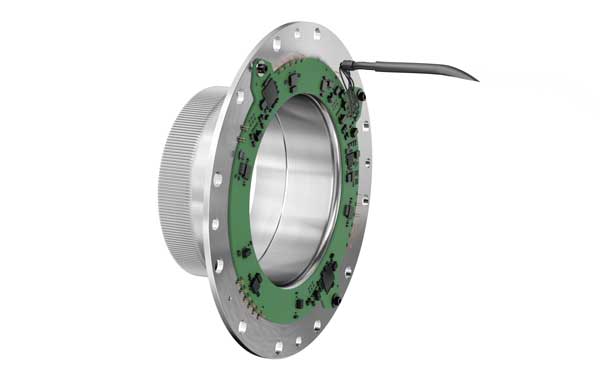 Schaeffler has many years of experience in the development, application and series production of integrated torque sensors. As sensorect well-known sensor technology can be found, for example, in Wind energy and in the Automotive industry successful application.
Schaeffler has many years of experience in the development, application and series production of integrated torque sensors. As sensorect well-known sensor technology can be found, for example, in Wind energy and in the Automotive industry successful application.
The functionality is provided by a sub-micron thin, strain-sensitive PVD metal coating realized that by Micromachining is structured. The component itself becomes the sensor and the sensor becomes the component. For the application in robotics, the Flexspline of the precision wave gear was used because it is directly in the power flow. Additional installation space is not required. adhesives and transfer polymers are not required.
A very low hysteresis and linearity deviation is also outstanding, also due to the lack of interference factors. The smallest changes in force and torque are also reliably recorded, which is what smooth direct teach-in, i.e. the operation and self-optimization of cobots is significantly simplified.
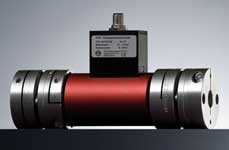 Torque measuring shaft simultaneously determines four measured variables
Torque measuring shaft simultaneously determines four measured variables
The sensor element offers a Accuracy of <0,5% (Fullscale), which is an excellent value compared to sensor modules in the cobot market. Since the sensors are firmly integrated in the RT1 precision harmonic drive, other influences such as mechanical hysteresis and temperature add up, which ultimately lead to a "sensor+gear" system accuracy of <1,5% (full scale of the repeatable peak torque of the precision harmonic drive). This distinction must be taken into account when comparing external torque sensors on the market, which are functional as a unit.
Summary of the new torque measurement
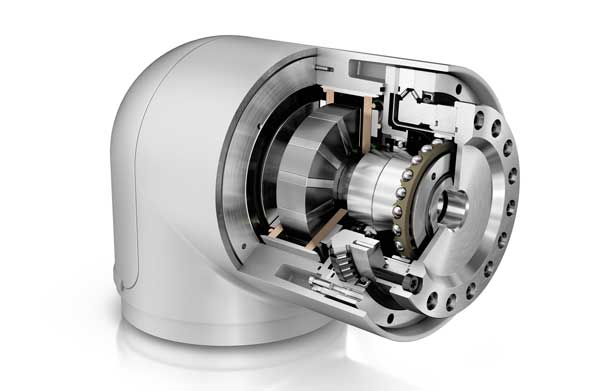 The in the Strain wave gear built-in torque sensors do not affect the mechanical structure of cobots. Their torsional rigidity in the rotary axes is 100% retained compared to external sensors.
The in the Strain wave gear built-in torque sensors do not affect the mechanical structure of cobots. Their torsional rigidity in the rotary axes is 100% retained compared to external sensors.
Schaeffler also has the double-row as a further component Angular needle bearing XZU developed for the RT harmonic drive. This increases the rigidity of the cobot structure across the axes of rotation. Positioning time can be reduced by up to 50% by using the XZU bearings instead of the usual crossed roller bearings in the cobot joints.
With the RT1-T precision wave gears, the performance in the form of speed and acceleration of cobots can be increased without having to accept long transient times and large amplitudes. Schaeffler is thus paving the way for the industry economic use of cobots for autonomous use in dynamic applications.
You might also be interested in...
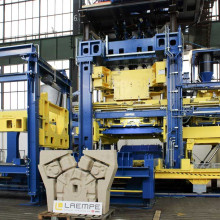
Profile rail guide using modern foundry technology from Laempe

Artificial Intelligence | trends and developments
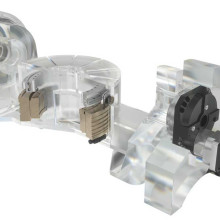
Planetary gear + strain wave gear precision from Schaeffler
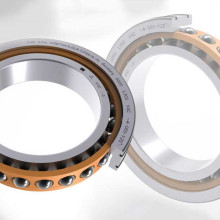
spindle bearing | The Vacrodur high-performance elements
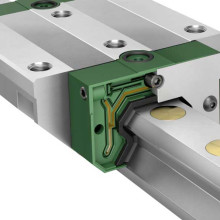
linear guide | Precise, light, durable
